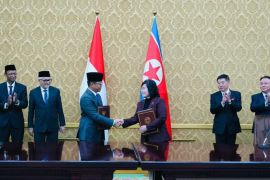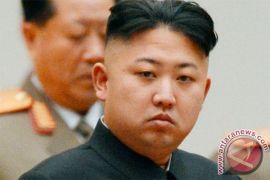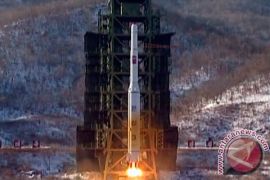The report by North Korea's official KCNA news agency comes amid heightened regional tension following Pyongyang's two tests of intercontinental ballistic missiles (ICBM) in July that potentially could fly about 10,000 km (6,200 miles), putting many parts of the mainland United States within range.
Under third-generation leader Kim Jong Un, North Korea has been pursuing a nuclear device small and light enough to fit on a long range ballistic missile, without affecting its range and making it capable of surviving re-entry into the Earth's atmosphere.
North Korea, which carries out its nuclear and missile programs in defiance of UN Security Council resolutions and sanctions, recently succeeded in making a more advanced hydrogen bomb that will be loaded on to an ICBM, KCNA said.
"The H-bomb, the explosive power of which is adjustable from tens kiloton to hundreds kiloton, is a multi-functional thermonuclear nuke with great destructive power which can be detonated even at high altitudes for super-powerful EMP (electromagnetic pulse) attack according to strategic goals," KCNA said.
"All components of the H-bomb were homemade and all the processes... were put on the Juche basis, thus enabling the country to produce powerful nuclear weapons as many as it wants," KCNA quoted Kim as saying.
Juche is North Korea's homegrown ideology of self-reliance that is a mix of Marxism and extreme nationalism preached by state founder Kim Il Sung, the current leaders grandfather. It says its weapons programmes are needed to counter US aggression.
North Korea offered no evidence for its latest claim, and Kim Dong-yub, a military expert at Kyungnam University Institute of Far Eastern Studies in Seoul, was sceptical.
Referring to tens to hundreds of kilotons, it doesn't appear to be talking about a fully fledged H-bomb. Its more likely a boosted nuclear device," Kim said, referring to an atomic bomb which uses some hydrogen isotopes to boost explosive yield.
A hydrogen bomb can achieve thousands of kilotons of explosive yield - massively more powerful than some 10 to 15 kilotons that North Korea's last nuclear test in September was estimated to have produced, similar to the bomb dropped on Hiroshima, Japan, in 1945.
Impoverished North Korea and the rich, democratic South are technically still at war because their 1950-53 conflict ended in a truce, not a peace treaty. The North regularly threatens to destroy the South and its main ally, the United States.
Editor: Ade P Marboen
Copyright © ANTARA 2017









